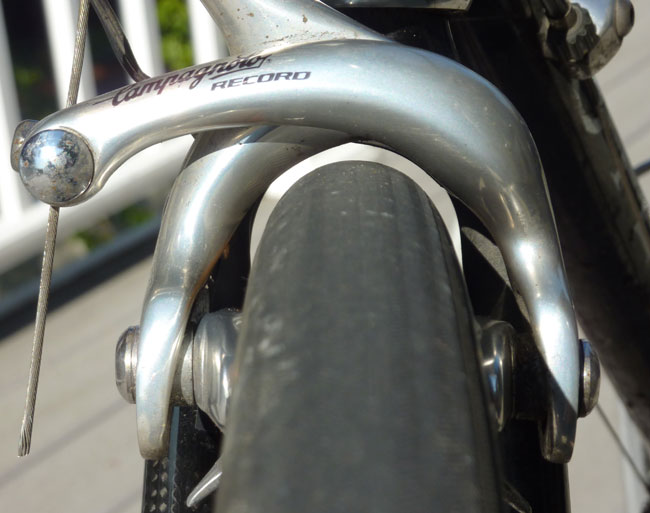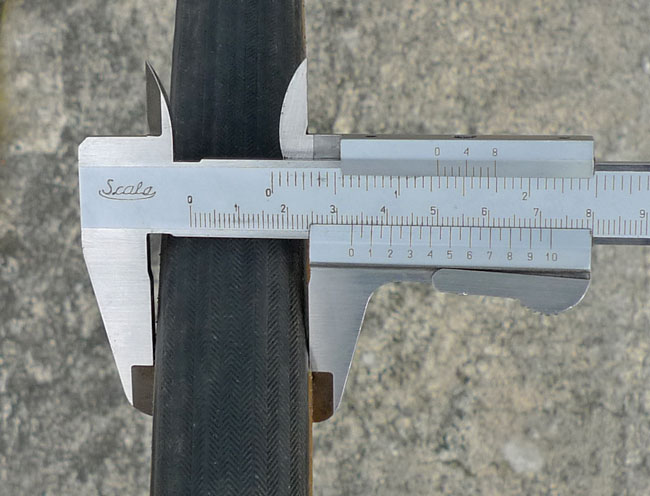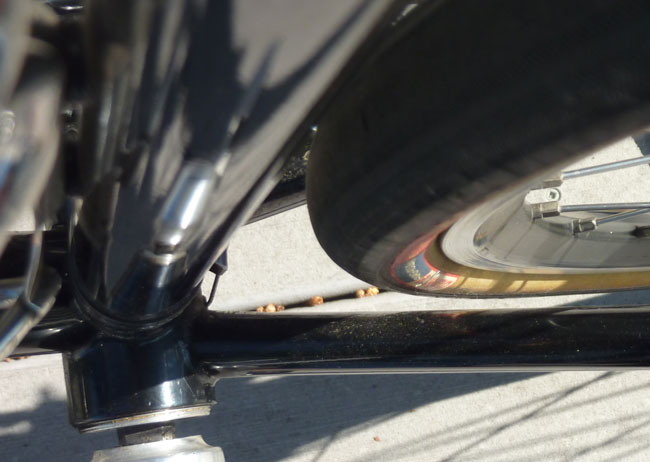How Wide a Tire Can I Run?
Many cyclists want to ride on wider tires, but are limited by the clearances of their bikes. So they want to use the widest tires their bike can fit. How do you determine your bike’s maximum tire width?
You need a set of calipers (below). If you don’t have any, bike shops have them. Please leave a generous tip if you ask a shop mechanic to help you with this!
1. Measure your current tires
Measure the width of your current tires. Be careful not to pinch the tire. Instead, increase the opening of the calipers in 0.5 mm increments, and check whether the opening has play when it is slipped over the tire. (The calipers “rattle” when you move them.) When this happens, the calipers are set just a tad larger than the actual width of your tires. Use this measurement as your current tire width.
If you pinch the tire with the calipers, you may get a measurement that is up to 2 mm narrower. Also don’t use the width that is printed on the side of your current tires. It’s not always accurate enough for this purpose.
2. Check your clearances
Check all around your wheels how much clearance you have between tire and frame/fork/brakes. Most important are:
- fork crown
- brake calipers (front and rear): squeeze your brakes to get the clearance when you’re braking
- chainstays
- seatstays can limit the clearances on some bikes
- seat tube
- fenders: often, you can adjust the fenders to eliminate a tight spot.
We recommend a minimum of 3 mm clearance between your tires and the closest part of your bike. Any less, and you risk having your tire rub under hard acceleration or if the wheel develops a slight wobble.
3. Calculate your maximum tire width
Start with the smallest clearance between your existing tire and bike. Then deduct the gap between tire and frame/fork/brake/fender – 3 mm – to get the available clearance for your wider tire. Multiply this by 2 (you have that much room on both sides of the tire), add the current tire width, and you get the maximum tire width:
max. tire width = 2 x (tightest clearance – 3 mm) + current tire width
Example: Your current tires are 29 mm wide. You have 5 mm clearance at the tightest spot. That leaves 2 mm available clearance. You can run 4 mm wider tires than your current ones. Your maximum tire width is 33 mm:
max. tire width = 2 x (5 mm – 3 mm) + 29 mm = 33 mm
This assumes that your new tires have a similar height-to-width ratio as your existing ones. Some inexpensive tires can be much taller than they are wide, but high-end tires usually are relatively round, and this formula works well.
If you find yourself between two available tire sizes, I suggest using the narrower tire. High-end tires tend to expand over time as the casing “relaxes,” and you don’t want your tire to rub every time you rise out of the saddle and flex your wheel. If you find that you still have extra clearance, you can go up one more size when your new tires wear out.
By the way, the bike in the photos does not appear to have extra clearance, so if your bike looks like that, you should probably stick with your current tire width. You still can improve the ride and performance of your bike by using more supple tires with higher-quality casings.
Read more about why supple sidewalls are more important than a few millimeters in tire width.
Photo credits: Ernie Fong





